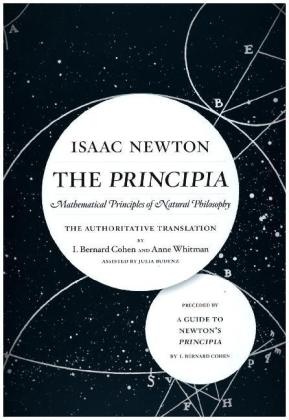Read more
In his monumental 1687 work Philosophiae Naturalis Principia Mathematica, known familiarly as the Principia, Isaac Newton laid out in mathematical terms the principles of time, force, and motion that have guided the development of modern physical science. Even after more than three centuries and the revolutions of Einsteinian relativity and quantum mechanics, Newtonian physics continues to account for many of the phenomena of the observed world, and Newtonian celestial dynamics is used to determine the orbits of our space vehicles. This completely new translation, the first in 270 years, is based on the third (1726) edition, the final revised version approved by Newton; it includes extracts from the earlier editions, corrects errors found in earlier versions, and replaces archaic English with contemporary prose and up-to-date mathematical forms.
List of contents
Preface
A GUIDE TO NEWTON'S PRINCIPIA
Contents of the Guide
Abbreviations
CHAPTER ONE: A Brief History of the Principia
CHAPTER TWO: Translating the Principia
CHAPTER THREE: Some General Aspects of the Principia
CHAPTER FOUR: Some Fundamental Concepts of the Principia
CHAPTER FIVE : Axioms, or the Laws of Motion
CHAPTER SIX: The Structure of Book 1
CHAPTER SEVEN: The Structure of Book 2
CHAPTER EIGHT: The Structure of Book 3
CHAPTER NINE : The Concluding General Scholium
CHAPTER TEN: How to Read the Principia
CHAPTER ELEVEN : Conclusion
THE PRINCIPIA (Mathematical Principles of Natural Philosophy)
Halley's Ode to Newton
Newton's Preface to the First Edition
Newton's Preface to the Second Edition
Cotes s Preface to the Second Edition
Newton's Preface to the Third Edition
Definitions
Axioms, or the Laws of Motion
BOOK 1: THE MOTION OF BODIES
BOOK 2: THE MOTION OF BODIES
BOOK 3: THE SYSTEM OF THE WORLD
General Scholium
Index
About the author
Sir Isaac Newton (1642-1727), englischer Mathematiker, Physiker und Astronom, gehört zu den bedeutendsten Naturforschern der Menschheitsgeschichte. Bahnbrechende theoretische Ansätze über die Natur des Lichts, über Gravitation und Planetenbewegungen und über mathematische Probleme, vor allem zu Infinitesimalrechnung und Algebra, wurden von ihm entwickelt.§Newtons Ruhm als Begründer der klassischen theoretischen Physik und damit - neben Galilei - der exakten Naturwissenschaften überhaupt geht insbesondere auf sein Hauptwerk "Mathematische Prinzipien der Naturlehre", bekannt als "Principia", zurück. Die von ihm geschaffene Grundlage der Mechanik wurde erst zu Beginn des 20. Jh. durch die Einsteinsche Relativitätstheorie modifiziert.
Summary
Describes the acceleration, deceleration, and inertial movement; fluid dynamics; and the motions of the earth, moon, planets, and comets. This title deals with the fundamental three laws of motion and the law of universal gravity. It is suitable for scientists, scholars, and students.

